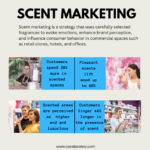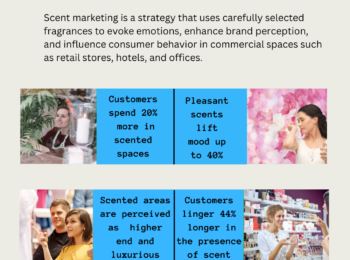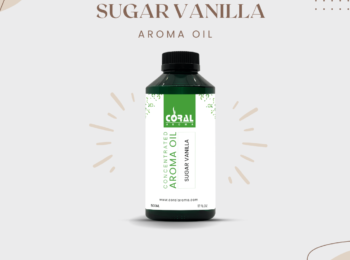In today’s competitive business landscape, creating a strong brand identity is crucial for success. And one often overlooked aspect of branding is scent marketing. Strategic use of scents in your marketing efforts can evoke powerful emotions and forge a lasting connection with your audience. However, there are certain costly mistakes that many brands make when implementing scent marketing, which can hinder their impact and return on investment.
In this blog, we will explore and address five common mistakes in scent marketing that you should avoid to ensure your brand’s impact is maximized. From choosing the wrong scent to neglecting the importance of consistency across different touchpoints, these missteps can leave your audience confused or unimpressed. We will provide actionable tips and insights on how to overcome these hurdles and leverage scent marketing to its full potential..
What is scent marketing?
Scent marketing, also known as olfactory marketing, is a strategic approach to marketing that utilizes scents to create a positive and memorable experience for consumers. Just like visual and auditory cues, scents have the power to evoke emotions and trigger memories, making them a valuable tool for brands to connect with their audience on a deeper level.
Scent marketing can be implemented in various ways, such as incorporating scents into physical retail spaces, product packaging, promotional materials, or even through digital platforms. The goal is to create a consistent and immersive brand experience that engages multiple senses and leaves a lasting impression.
The importance of scent in marketing
The sense of smell is often underestimated in marketing, as brands tend to focus more on visual and auditory elements. However, research has shown that scent can have a profound impact on consumer behavior and perception.
Firstly, scent is strongly linked to memory and emotion. Certain smells can trigger nostalgic feelings or associations, allowing brands to create a positive and memorable experience for their customers.
Secondly, scent can influence consumer perception and behavior. Studies have found that pleasant scents can enhance the perception of product quality, increase time spent in a retail environment, and even influence purchasing decisions. By strategically incorporating scents into their marketing efforts, brands can shape consumer perceptions and drive desired behaviors.
Common mistakes in scent marketing
While scent marketing can be a powerful tool for brand success, there are several common mistakes that brands often make, which can hinder their impact and return on investment. Let’s discuss these mistakes and how to avoid them.
Mistake #1: Choosing the wrong scent
One of the most crucial aspects of scent marketing is selecting the right scent that aligns with your brand identity and resonates with your target audience. Choosing the wrong scent can lead to confusion or even repulsion, ultimately damaging your brand’s impact.
To avoid this mistake, take the time to understand your brand’s values, personality, and target audience. For example, a bakery may opt for a warm and inviting scent like freshly baked bread, while a luxury hotel may choose a more sophisticated and calming fragrance.
Conduct market research and gather feedback from your target audience to ensure that the chosen scent aligns with their preferences and expectations. Additionally, test the scent in different environments to see how it performs and adjust accordingly.
Mistake #2: Overpowering or underwhelming scents
Finding the right balance is key when it comes to scent marketing. Using an overpowering scent can overwhelm customers and drive them away, while an underwhelming scent may go unnoticed and fail to make an impact.
Consider the context in which the scent will be experienced. In larger spaces, such as retail stores or hotel lobbies, a more potent scent may be appropriate. However, in smaller spaces or closer interactions with products, a milder scent is recommended to avoid overwhelming the senses.
Regularly assess the intensity of the scent and make adjustments if necessary. Ensure that it is noticeable but not overpowering, creating a pleasant and subtle ambiance that enhances the overall brand experience.
Mistake #3: Neglecting scent consistency
Consistency is vital in scent marketing to create a cohesive brand experience across different touchpoints. Neglecting scent consistency can lead to confusion and dilute the impact of your branding efforts.
Ensure that the scent used in your physical retail spaces aligns with the scent incorporated in your product packaging, promotional materials, and even digital platforms. Consistency in scent helps reinforce brand recall and strengthens the emotional connection with your audience.
Develop guidelines and protocols for scent implementation to ensure consistency across various channels. Train your staff to understand the importance of scent consistency and how it contributes to the overall brand experience.
Mistake #4: Ignoring the target audience
Understanding your target audience is crucial in all aspects of marketing, including scent marketing. Ignoring the preferences and expectations of your audience can lead to a mismatch between the scent and their perception of your brand.
Conduct thorough market research to understand the demographics, psychographics, and preferences of your target audience. Consider their cultural background, age, gender, and lifestyle factors when selecting a scent. For example, a younger audience may prefer more vibrant and energetic scents, while an older audience may lean towards more subtle and calming fragrances.
Additionally, gather feedback from your customers and incorporate their input into your scent marketing strategy. Regularly assess the effectiveness of the scent in resonating with your target audience and make adjustments as needed.
Mistake #5: Failing to measure scent marketing success
Measuring the success and impact of your scent marketing efforts is essential to understand its effectiveness and make informed decisions. Failing to measure scent marketing success can leave you unaware of the return on investment and hinder your ability to optimize your strategy.
Implement tracking mechanisms to measure the impact of scent marketing on various metrics, such as customer satisfaction, brand recall, and sales. Utilize surveys, focus groups, or even data analytics to gather meaningful insights.
Regularly review and analyze the collected data to identify trends, strengths, and areas for improvement. Use these insights to refine your scent marketing strategy and maximize its impact on your brand.
How to avoid these mistakes and boost your brand’s impact
Now that we have discussed the common mistakes in scent marketing, let’s explore some actionable tips and insights on how to avoid these pitfalls and boost your brand’s impact.
- Research and understand your target audience: Invest time and resources in market research to gain a deep understanding of your target audience’s preferences, expectations, and demographics. Tailor your scent marketing strategy accordingly to ensure it resonates with your audience.
- Test and evaluate scents: Before implementing a scent strategy, test various scents in different environments to assess their impact and gather feedback. Consider factors such as intensity, longevity, and compatibility with your brand identity.
- Prioritize scent consistency: Develop guidelines and protocols for scent implementation across different touchpoints. Train your staff to ensure consistency in scent usage, reinforcing brand recall and creating a seamless brand experience.
- Measure the impact: Implement tracking mechanisms and analyze data to measure the impact of scent marketing on key metrics. Regularly review and refine your strategy based on the insights gathered.
- Seek professional guidance: If you lack expertise in scent marketing, consider consulting with professionals who specialize in this field. They can provide valuable insights and guidance to help you avoid costly mistakes and maximize the impact of your scent marketing efforts.
Conclusion
Scent marketing is a powerful tool that can enhance your brand’s impact and forge a lasting connection with your audience. However, it is essential to avoid the common mistakes that many brands make in scent marketing. By choosing the right scent like Coral Aroma, which is striking the right balance, ensuring consistency, understanding your target audience, and measuring success, you can unlock the full potential of scent marketing for your brand’s success.









































